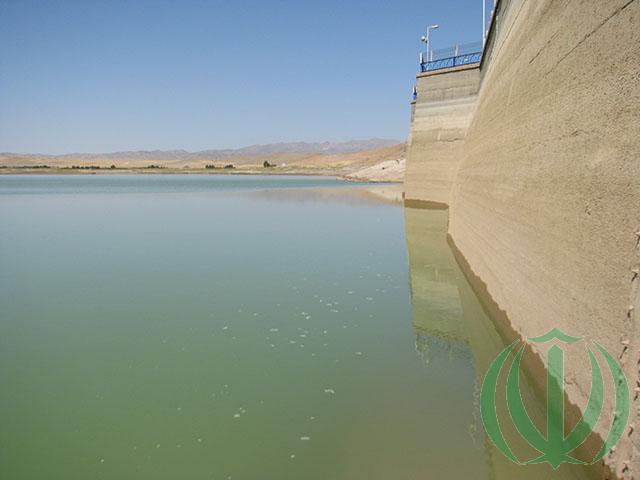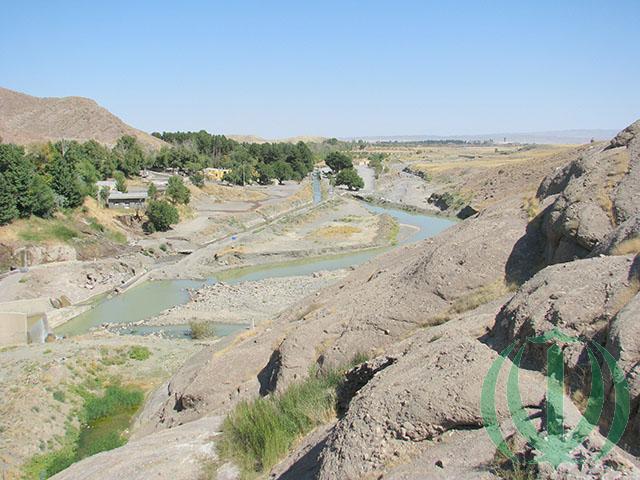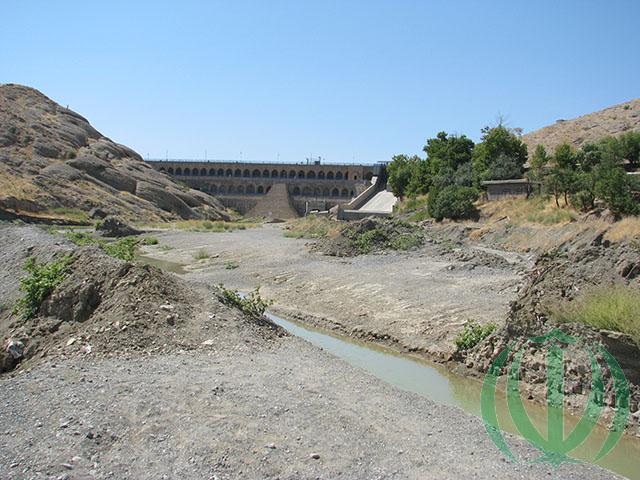Часть 1.
В нескольких километрах от города Фариман, что в иранской провинции Хорасан-Резави, сохранилась старинная плотина. Это интересное сооружение, которому по утверждению историков не менее 6 веков, и сегодня выполняет не только важную роль в орошении сельхозугодий района, но и является историческим памятником.

Когда-то, в древности, большая и глубокая ложбина между холмами в период таяния снегов и весенних дождей превращалась в озеро. Летом озеро часто пересыхало. Стремясь сохранить в нём воду, древние земледельцы перекрывали сток воды валом из камней, который рано или поздно прорывала непокорная вода. Поэтому, уже до Нашей эры, местные владыки пытались возвести здесь прочную плотину. Так продолжалось до 14 века, когда грозный Тимур Тамерлан повелел перекрыть ущелье толстой и прочной кирпичной плотиной. Многие тысячи рабов с восхода до захода солнца, в летнюю жару и зимнюю стужу, долбили гранит и обжигали кирпичи. Вот как потрясающе, словно очевидец, описывает это наш замечательный историк и писатель Сергей Петрович Бородин в романе “Звёзды над Самаркандом”:
“… Аяр въехал в долину, где тысячи людей, сведённых сюда со всего Хорасана, рыли канал. Уверенный, что хорасанские земли навсегда стали частью его удела, Тимур велел оросить поля Хорасана.
Серые рубища, изорванные на локтях и на спинах, измазанные, измокшие под ночным дождём, не прикрывали костлявых, посинелых тел, обросших всколоченными волосами землекопов. Сил землекопам хватало лишь на то, чтоб, едва приподняв мотыгу, соскрести в сторону горсть глины. Там, где на своей земле молодой земледелец одним взмахом мотыги сбрасывает тяжкий пласт, им надо было долго трудиться. Казалось, они не прорывают, а процарапывают русло. Им было невмоготу – не было ни сил, ни того, что пробуждает силу – любви к делу, Зачем, для кого было им здесь напрягаться? Лишь бы избежать лишнего удара от надсмотрщиков, лишь бы дотянуть до полудня, когда каждому дадут чашку варева и клок лепёшки.
И ни говором, ни движеньем – ничем не нарушало степного безмолвия и безлюдья это множество людей, тяжело трудившихся в степи. Лишь скрипели камни или песок под мотыгами, да хрипло, глухо звучали окрики надсмотрщиков. Не было слышно даже вскриков, когда палка ударялась о чью нибудь нерадивую спину, будто били не по живому телу, а по сухой глине…”

Воследствии плотину неоднократно реконструировали – вплоть до наших дней. Её нынешняя высота около 20 метров. Водохранилище наполняется водой родников и талыми водами – реки сюда не впадают. Глубина воды в период её максимального уровня 8-10 метров.
Весной и осенью сюда слетаются на отдых и подкормиться многочисленные стаи перелётных птиц – в озере водится рыба. На радость пернатым гостям ловля рыбы людьми запрещена. А летом к воде на водопой приходят обитатели холмов и предгорий – зайцы, лисы и другие местные обитатели. С одним из необычных аборигенов – большой ящерицей – я познакомился лично…
Фотографии сделаны 5 сентября 2019 года.






Part 1.
A few kilometers from the city of Fariman, in the Iranian province of Khorasan-Rezavi, an ancient dam has been preserved. This is an interesting building, which, according to historians, is at least 6 centuries old, and today it plays not only an important role in irrigating the farmland of the region, but it is also a historical monument.Once, in ancient times, a large and deep hollow between the hills during the melting of snow and spring rains turned into a lake. In summer, the lake often dried up. In an effort to preserve water in it, ancient farmers blocked the flow of water with a shaft of stones, which sooner or later the rebellious water broke through. Therefore, already before our era, local rulers tried to build a solid dam here. This continued until the 14th century, when the formidable Timur Tamerlan ordered to block the gorge with a thick and strong brick dam. Many thousands of slaves from sunrise to sunset, in the summer heat and winter cold, hollowed granite and burned bricks. Here is how amazing, like an eyewitness, this is described by our wonderful historian and writer Sergei Petrovich Borodin in the novel “Stars over Samarkand”:
“… Ayar entered the valley, where thousands of people brought here from all over Khorasan dug a canal. Confident that the Khorasan lands would forever become part of his inheritance, Timur ordered to irrigate the Khorasan fields.
Gray rags, torn on the elbows and on the backs, smeared, drenched in the night rain, did not cover the bony, blue-green bodies, overgrown with shabby hair of excavators. The diggers had enough strength only to scrub a handful of clay as soon as they lifted the hoe. Where on their land a young farmer with one swipe of a hoe dumps a heavy layer, they had to work hard for a long time. They did not seem to break through, but to scratch the channel. They were unbearable – there was neither strength, nor that which awakens strength – love of work, Why, for whom was it worth straining here? Just to avoid an extra blow from the overseers, just to hold out until noon, when everyone will be given a cup of brew and a clump of flat bread.
And neither by speaking, nor by moving – this did not violate the steppe silence and deserts, this multitude of people who worked hard in the steppe. Only stones or sand creaked under the hoes, but hoarser shouts sounded hoarse, muffled. There were no cries even when the stick struck someone’s negligent back, as if they had beaten not on a living body, but on dry clay … “
As a result, the dam was repeatedly reconstructed – up to the present day. Its current height is about 20 meters. The reservoir is filled with spring water and meltwater – the rivers do not flow here. The depth of water during its maximum level is 8-10 meters.
In spring and autumn, numerous flocks of migratory birds flock here to rest and feed themselves – there are fish in the lake. To the delight of feathered guests, fishing is prohibited by people. And in the summer, inhabitants of the hills and foothills — hares, foxes, and other local inhabitants — come to the watering hole. With one of the unusual aborigines – a large lizard – I met personally …
Photos taken September 5, 2019.



0 Comments